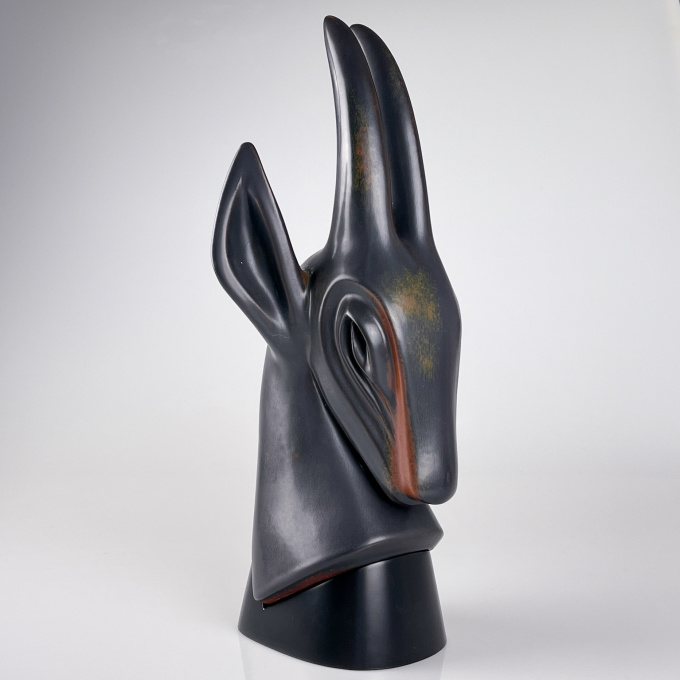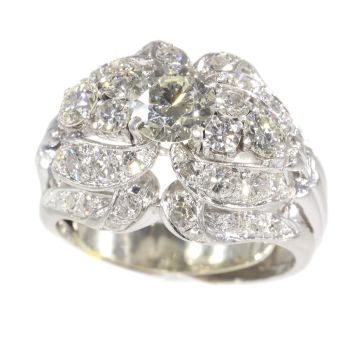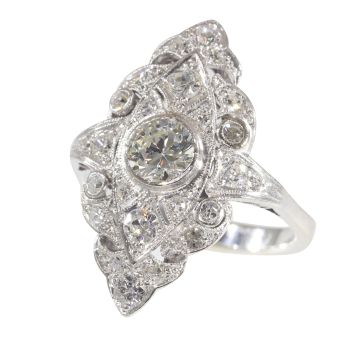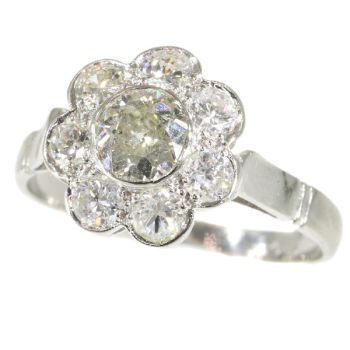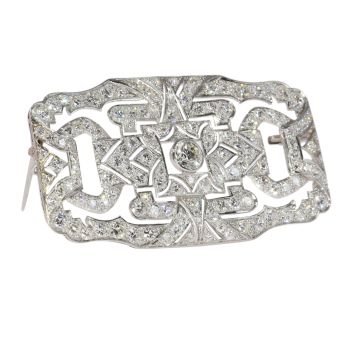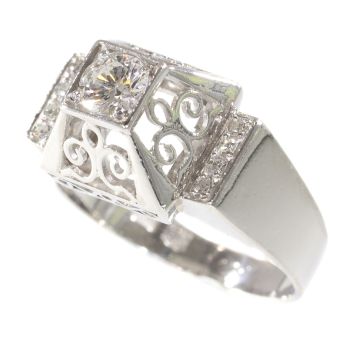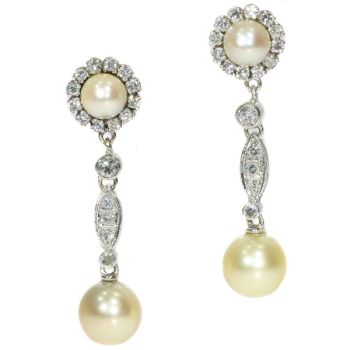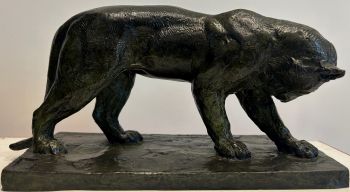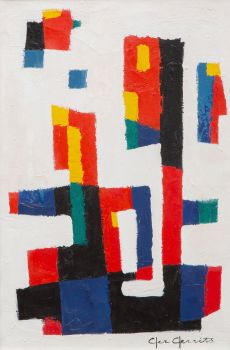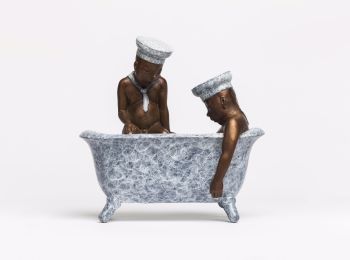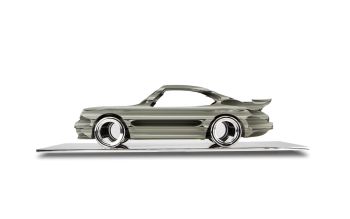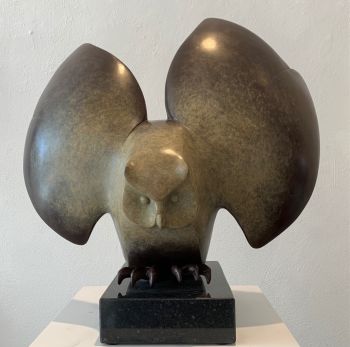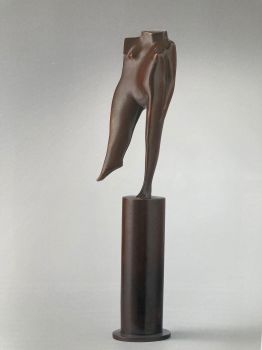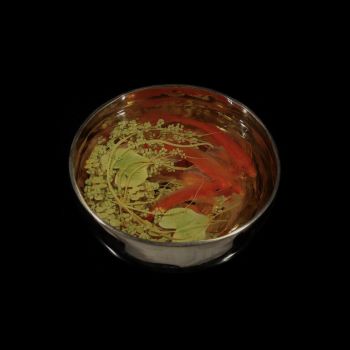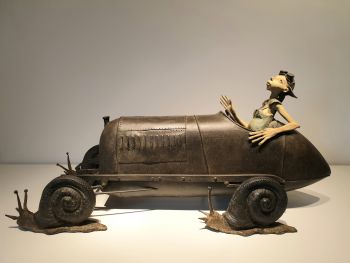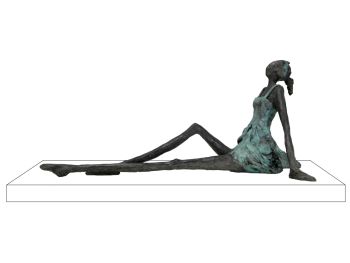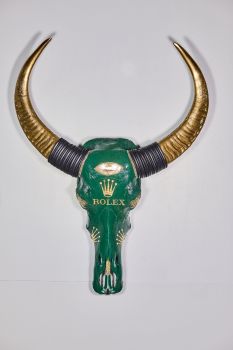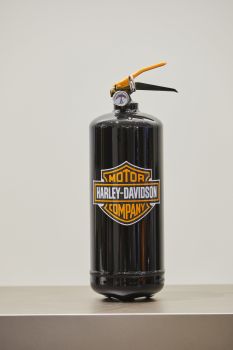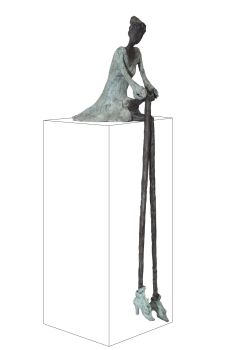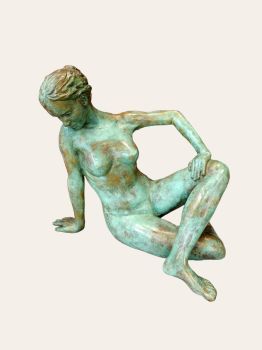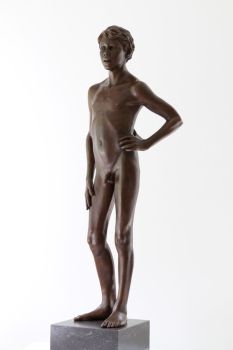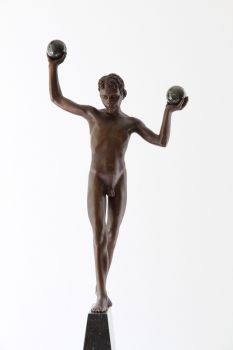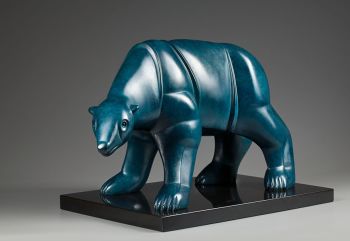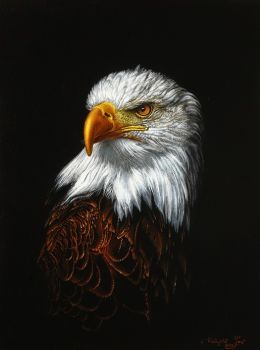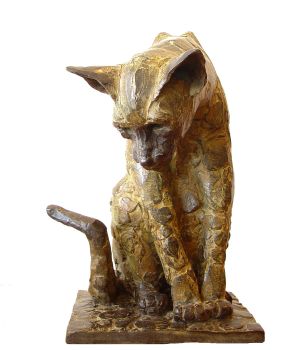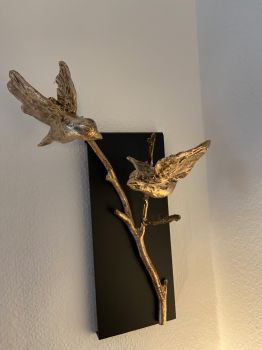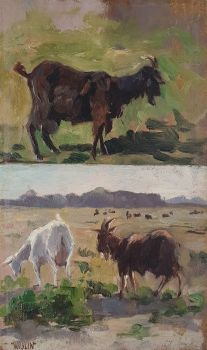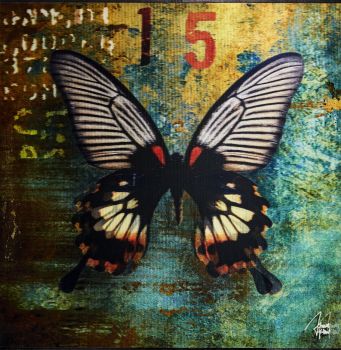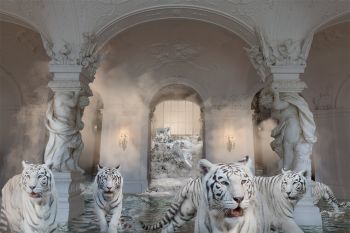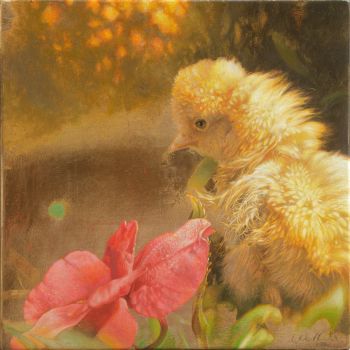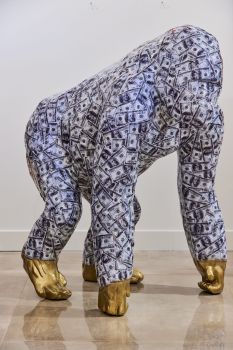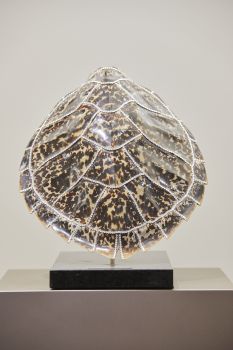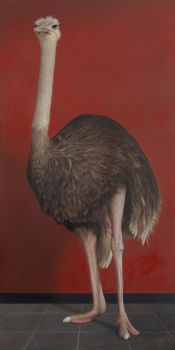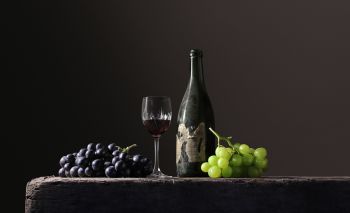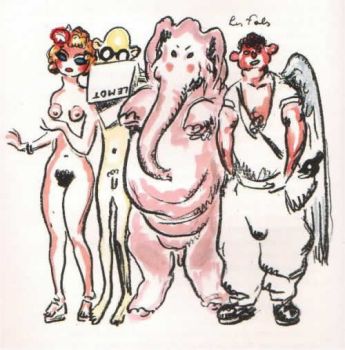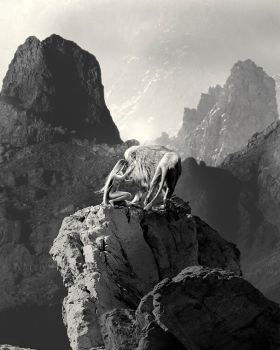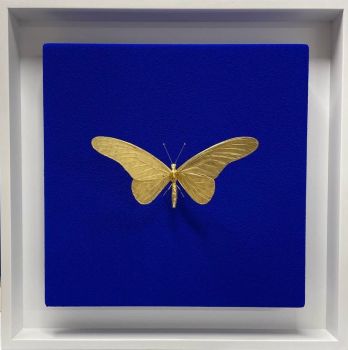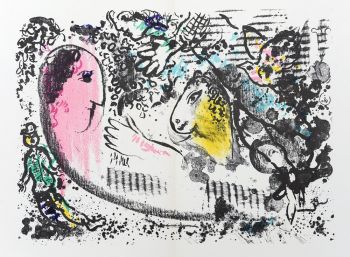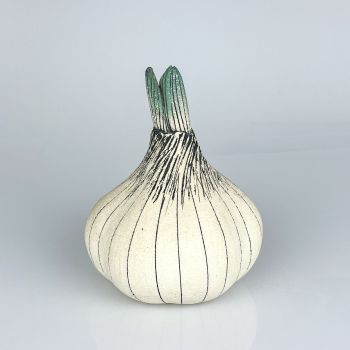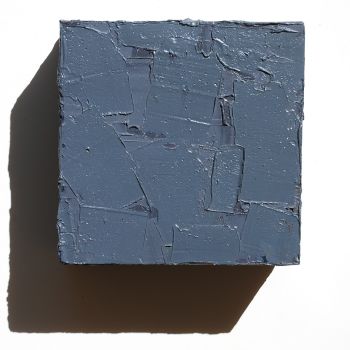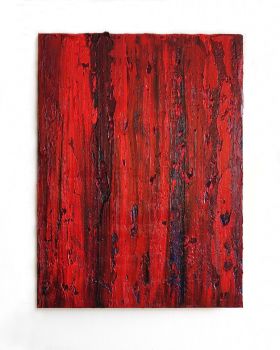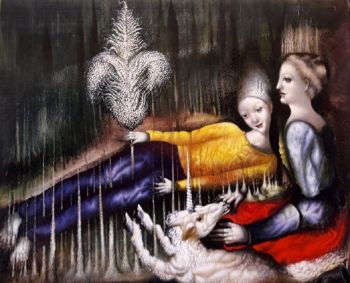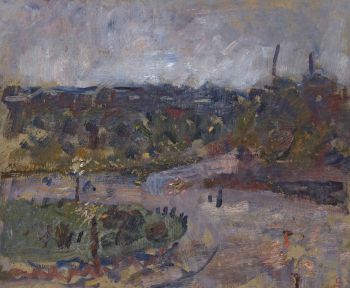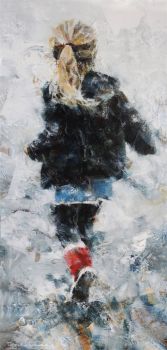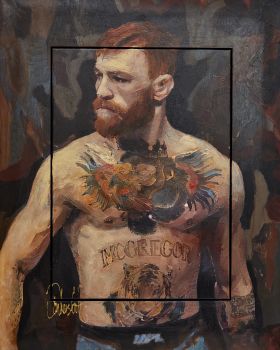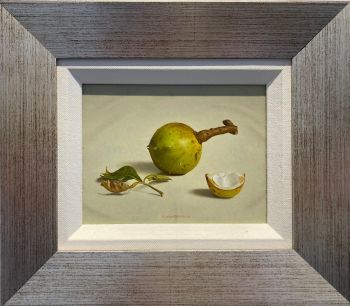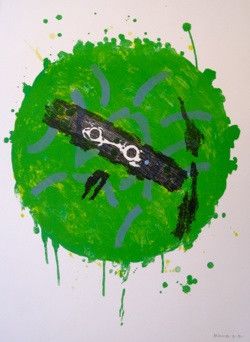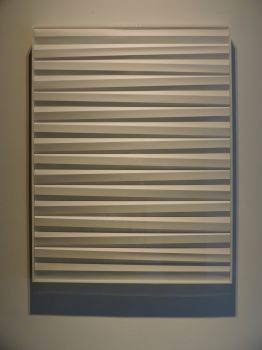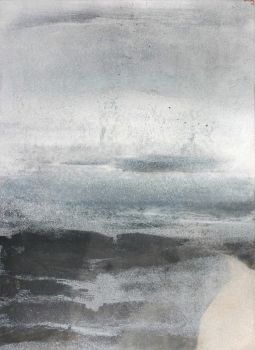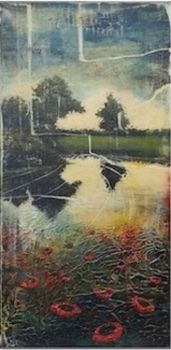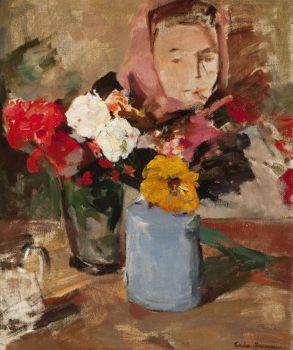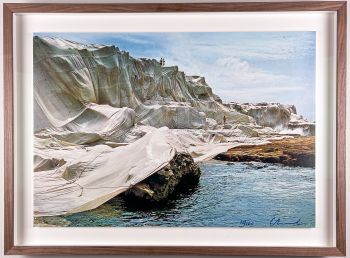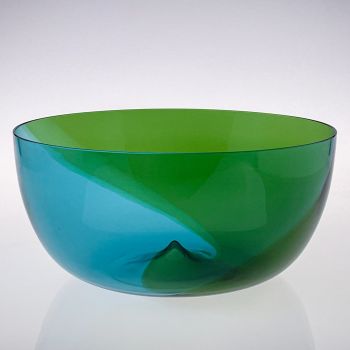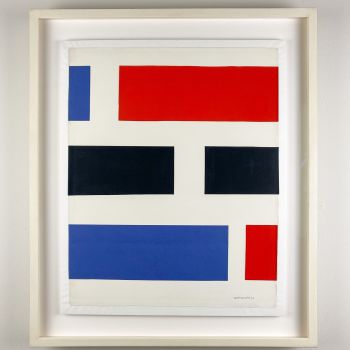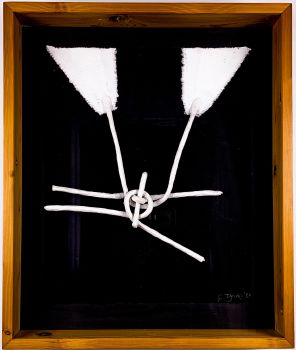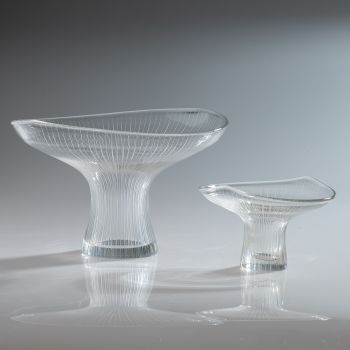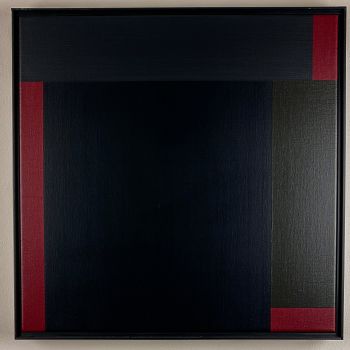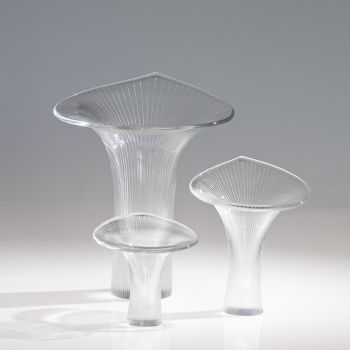A large glazed stoneware sculpture of an Antilope - Rörstrand, Sweden ca. 1955 1951 - 1960
Gunnar Nylund
SteinGlasurHolzSteingutFarbe
42 ⨯ 16 ⨯ 12 cm
ConditionVery good
€ 2.000
Van Kerkhoff Art
- Über KunstwerkA large stoneware sculpture of an Antilope, finished in matte reddish brown and dark brown glazes on a satin-gloss black lacquered wooden base, made in a limited edition of 200 pieces.
Gunnar Nylund was particular know for his animal figures with beautiful experimental glazes. The larger examples of exotic animals - like this antilope - are especially sought after.
This sculpture was designed by Gunnar Nylund and executed by the Swedish ceramics factory Rörstrand in the 1950's.
It is fully signed underneath: R (Rörstrand) Sweden with 3 crowns (after 1951 Rörstrand changed to the international spelling Sweden), GN (Gunnar Nylund) and 83/200. As it lacks the post 1960 VDN markings, this piece can be dated between 1951 and 1960.
About Gunnar Nylund
Gunnar Nylund (1904-1997) was a Swedish artist, ceramist and sculptor most known for his work for the Swedish ceramic manufacturer Rörstrand.
He was born in Paris to a Danish mother and a Swedish-Finnish father, both artists. His mother Fernanda Jacobsen-Nylund was a ceramist and his father Felix Nylund a sculptor.
He grew up in Helsinki and moved to Copenhagen in 1917. In Denmark he received his education as an architect at the Royal Danish Academy of Fine Arts in the 1920’s. In 1929 together with Nathalie Krebs he started a ceramics workshop Nylund og Krebs that later was renamed to Saxbo.
In 1931 Nylund started working for the ceramics manufacturer Rörstrand in Lidköping in Sweden, becoming Rörstrand’s artistic director in 1937 and he continued to work there in this position until 1956. In this period Nylund became well known for his innovative feldspar glazes - popularized by renowned ceramists Berndt Friberg and Carl-Harry Stålhane - and his glazed stoneware animal sculptures.
After his time at Rörstrand he became artistic director at the Strömbergshyttans glassworks in Hovmantorp, Sweden and in the early 1960’s worked for the Nymölle Keramiska Fabrik in Lyngby, Denmark where he started producing stoneware.
Nylund crafted some 30 reliefs and sculptures commissioned for public spaces and many of his sculptures are part of museal collections ie: The National Museum in Stockholm, the Sèvres museum in Paris, the Röhsska museet in Gothenburg, the Ateneum museum in Helsinki and the Danish Museum of Art & Design.
Marked
Marked underneath the base: R (Rörstrand) Sweden with 3 crowns, GN (Gunnar Nylund) and 83/200.
Condition
This sculpture is in very good condition. No cracks or chips.
The lacquered wooden base has been restored to original condition. - Über Künstler
Gunnar Nylund (1904-1997) war ein Künstler, Designer und Bildhauer dänischer und finnischer Herkunft, der überwiegend in Schweden arbeitete. Als wahrer Pionier der dekorativen Kunst der Mitte des Jahrhunderts gilt er als einer der bedeutendsten Keramiker des 20. Jahrhunderts und ist vor allem für seine Arbeit mit dem sehr berühmten schwedischen Keramikhersteller Rörstrand bekannt.
Nylund kam dank seiner künstlerischen Eltern schon früh mit verschiedenen Kunstformen in Kontakt. Diese Exposition trug wesentlich zu seinen multidisziplinären Fähigkeiten bei und kam seiner abwechslungsreichen Karriere in der dekorativen Kunst eindeutig zugute. Obwohl er zunächst Architektur in Kopenhagen studierte, brach er dieses Studium ab, um eine Festanstellung bei der Porzellanmanufaktur Bing & Gröndahl anzunehmen. Dort lernte er die dänische Keramikkünstlerin Nathalie Krebs kennen, mit der er sein eigenes innovatives Sortiment und später 1930 die Werkstatt „Saxbo“ entwickelte.
Seine Experimente mit neuen Formen beeindruckten Rörstrand sehr, der ihn von 1932 bis 1955 zum künstlerischen Leiter ernannte. Nach dieser Zeit übernahm Nylund die Rolle des künstlerischen Leiters der Glashütte Strömbergshyttan, während er noch freiberuflich als Keramikdesigner tätig war. Obwohl Nylunds Werk in Glas viel weniger als das in Keramik ist, ist es klar, dass er sich auch in diesem Medium hervorgetan hat, indem er zeitlose, elegante Gefäße in wunderschönen Farben geschaffen hat.
Wie viele seiner bekannten Zeitgenossen ist Nylunds Arbeit neben seinen glatten, matten Glasuren und schönen gedämpften Farben durch die Erforschung moderner Formen und Techniken definiert. Seine revolutionären Steingutvasen sind ein großartiges Beispiel dafür, bei dem er Schamotte, ein rohes Tonmaterial, gemischt mit Modelliermasse verwendete. Dieses Material stellte sicher, dass die Objekte während ihrer Herstellung nicht zusammenbrachen, was filigranere, feinere Formen ermöglichte.
Neben Steinzeug und Glaswaren ist Nylund auch ein versierter Bildhauer, der beauftragt wurde, viele Werke für öffentliche Räume, Theater, Bibliotheken und Banken zu schaffen. Seine Arbeiten sind in zahlreichen schwedischen Museen untergebracht, darunter das Nationalmuseum in Stockholm sowie verschiedene andere wie das Dänische Museum für Kunst und Design, das Ateneum Art Museum in Helsinki und das Nationale Keramikmuseum von Sèvres in Paris.
Sind Sie daran interessiert, dieses Kunstwerk zu kaufen?
Artwork details
Related artworks
 Kuratiert von
Kuratiert vonDanny Bree
1 - 4 / 24- 1 - 4 / 24
- 1 - 4 / 24
- 1 - 4 / 24
- 1 - 4 / 12

